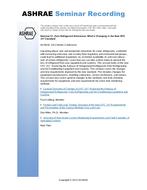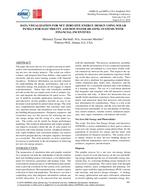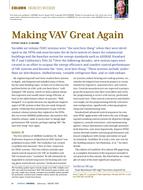Click here to purchase
The primary purpose of ventilation and air-conditioning system is to ensure internal comfort conditions through a continuous supply of air and maintaining the assumed indoor parameters. High air velocity in the occupied zone may result in an uncomfortable feeling of the draft, cooling effect, or local discomfort. The subjects of the study are linear diffusers, which depending on the purpose, are installed in ceilings, floors, or walls. Models may vary widely in their shape, number or size of slots/nozzles, and the length or shape of the deflector blades. The selection of the specific solution is possible only by comparing the operation of individual diffusers with each other. It could be very difficult for the average user because the datasheets often present results for different reference values or only at certain points. This work presents a comparison of the three different linear diffusers. Tests were to determine under the isothermal condition the airflow characteristics of different diffuser types by measuring velocities within the air stream at various distances away from the supply air terminal device. Measurements for each of the proposed solutions were carried out under the same ambient conditions. The supply airflow characteristics are investigated at various volumetric flow rates. The experimental tests were carried out in the thermal technology laboratory at the AGH University of Science and Technology in Cracow. The air velocity was measured at selected points using thermal anemometers. The measuring grid was prepared based on smoke tests. The collected data was used to prepare the velocity field and charts of the air throw lengths with a terminal velocity of 0.2 m/s (39 fpm) depending on the air flow rate in the selected measurement plane. The research presents the influence of air distribution systems on indoor environmental quality assessment. The fundamental aim of the paper is to present differences between systems equipped with linear diffusers of various designs. The analysis showed the design of the diffuser has an impact on the shape and range of the air stream. The vertical range for tested diffusers is significantly different. At a volume flow of 120 m3/h (4 237 ft3/h), it ranges from over 2.50 m (8.20 ft) to below 1.60 m (5.25 ft).
Citation: IAQ 2020: Indoor Environmental Quality
Product Details
- Published:
- 2020
- Number of Pages:
- 9
- File Size:
- 1 file
- Product Code(s):
- D-IAQ2020-C28
- Note:
- This product is unavailable in Belarus, Russia


